From museums and souks to fabulous restaurants, here are the things in Marrakech you should not miss
Having earned the prestige of being Africa’s first Capital of Culture, the city is now on a mission to introduce you to the best Moroccan food, fashion, design, art and hospitality. The Medina has recently benefited from careful architectural restoration; new museums have opened showcasing jewellery, desert gardens and ethnographic collections; the city’s souks sell almost anything you can dream up; and, the food scene is booming. So, join the throng and try out these must-do recommendations.
What to see in Marrakech.
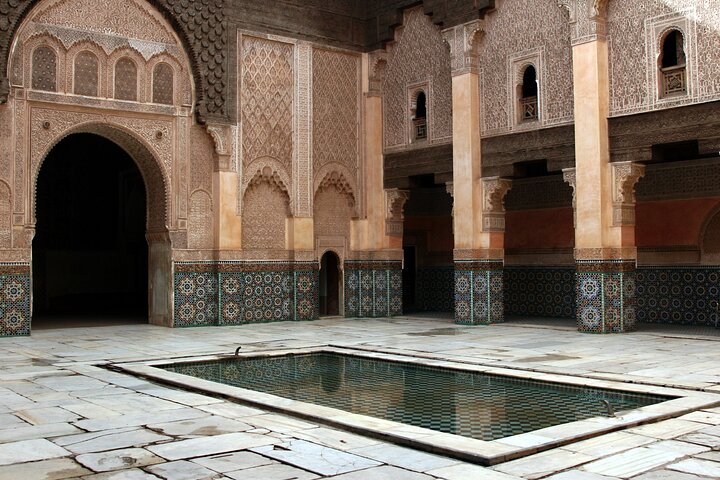
Medersa Ben Youssef
An architectural marvel and Marrakech’s most important monument, this 14th-century religious school has recently undergone a painstaking five-year renovation during which the rich zellij tiling, ancient cedarwood ceilings and vine-covered stuccowork have been brought back to stunning life. Up in the dormitories of Medersa Ben Youssef you’ll find absorbing videos about the restoration.
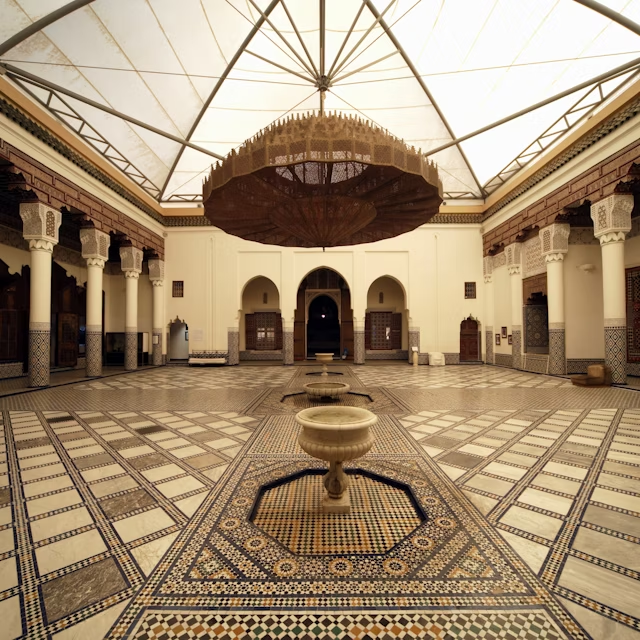
Musée de Marrakech
The Musée de Marrakech exhibits a collection of Moroccan art forms within the decadent salons of the Mnebhi Palace. The central internal courtyard, with its riot of cedar archways, stained-glass windows, intricate painted door panels and, of course, lashings of zellige (colourful geometric mosaic tilework), is the highlight, though don’t miss the display of exquisite Fez ceramics in the main room off the courtyard, and the palace’s hammam. This is one of Marrakesh’s oldest museums and looks dated compared with some others.
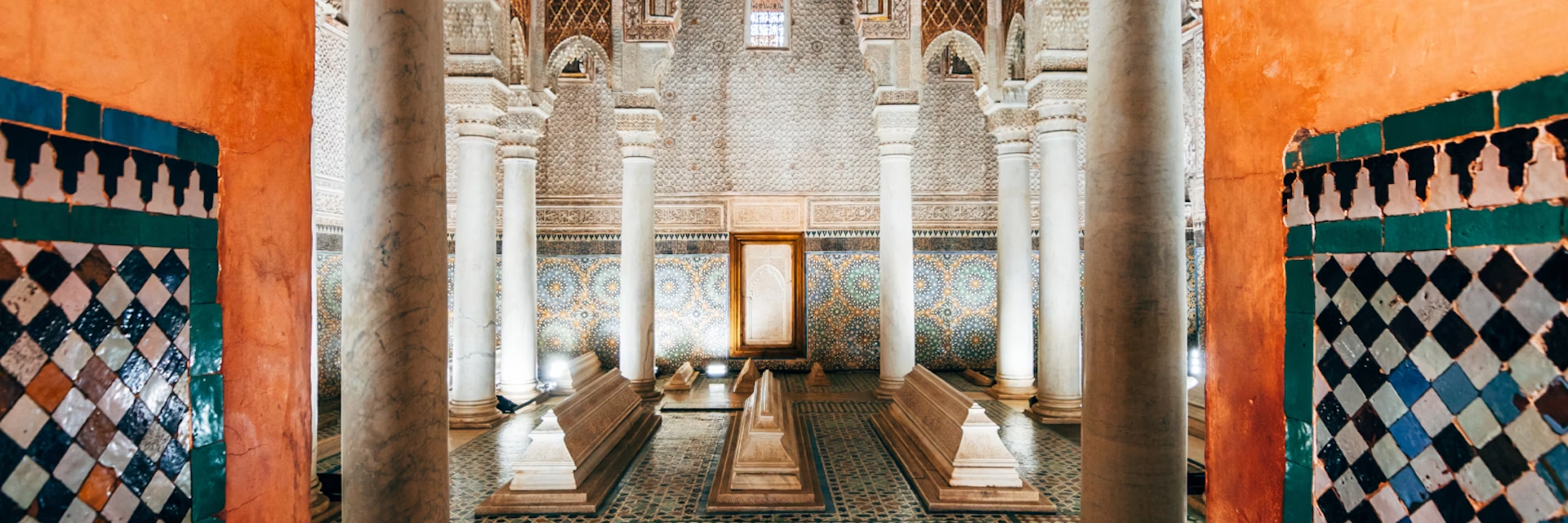
Saadian Tombs
Saadian Sultan Ahmed Al Mansour Ed Dahbi was just as extravagant in death as he was in life. After the « golden king » built Badia Palace in the 16th century, he transformed an existing necropolis into this lavish tomb complex, sparing no expense and importing Italian Carrara marble and gilding honeycomb muqarnas (decorative plasterwork) with pure gold. Al Mansour died in splendour in 1603, but a few decades later, Alaouite Sultan Moulay Ismail walled up the Saadian Tombs to keep his predecessors out of sight and mind. The mausoleum lay forgotten until aerial photography exposed it in 1917.

Jardin Majorelle
Created by the French painter Jacques Majorelle, this botanical garden is home to more types of cacti than you can shake a terrarium at and has a stunning indigo blue art deco house as its centrepiece.
Musée Yves Saint Laurent
The French designer loved spending time in Marrakech so much he bought the famous Jardin Majorelle in 1980 and made it home. Now, the Musée Yves Saint Laurent, located next door, is dedicated to Yves’s couture legacy and has a permanent display of hundreds of garments spanning his 40-year career.
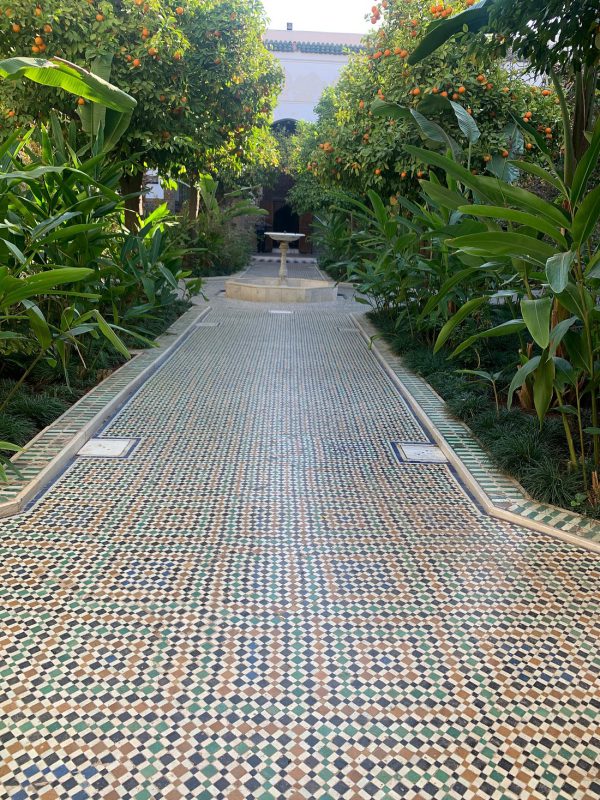
Bahia Palace
Bahia Palace (which roughly translates to ‘beautiful palace’) was built in the late 19th century, and now forms the epicentre of the city’s culture. You won’t believe the decor until you see it, with high, gilded ceilings, rooms filled with paintings, mosaics and stuccos, and a huge, open garden to wander.

Koutoubia Mosque
They say imitation is the greatest compliment, and the 12th-century 250ft-high minaret has quite the reputation as an architectural muse. It’s the prototype for the Giralda in Seville, Spain, and Le Tour Hassan in Rabat, the capital of Morocco. Unlike Middle Eastern mosques, which have domed minarets, the Koutoubia’s square design is an Amazigh trademark.

Djemaa El Fna
Roll up, roll up for the greatest show on earth. Everywhere you look in Djemaa El Fna, Marrakesh’s main square (pronounced « jema » – the « d » is silent), you’ll discover drama in progress. The hoopla and halqa (street theater) have been non-stop here since the 11th century. Until a few decades ago, it hosted a daily food market for mountain traders. Now the whine of snake-charmer pungi flutes hits full throttle by mid-morning, and the show doesn’t really kick off until sunset when restaurants fire up their grills, cueing musicians to tune up their instruments.
Other Places ...
Badia Palace
 | As 16th-century Sultan Ahmed Al Mansour (r 1578-1603) was paving the Badia Palace with gold, turquoise and crystal, his court jester wisecracked, ‘It’ll make a beautiful ruin.’ That jester was no fool: at the beginning of the 18th century, the place was destroyed by Sultan Moulay Ismail and materials carried off to then-capital Meknes. Today only remnants remain, watched over by nesting storks. There are magnificent views from the ramparts, and in 2018 a renovation added some exhibitions. |
Dar El Bacha
 | This palace was built for Pacha Thami El Glaoui, also known as the Lord of the Atlas, who ruled over Marrakesh from 1912 to 1956. It is one of the medina’s finest examples of riad architecture, dripping with zellige (colourful geometric tilework), intricate white plasterwork and heavy carved cedar-wood lintels, and opened to the public in 2015 as the Museum of Confluences. Well-presented exhibitions, which inhabit the salons around the main courtyard, span the arts and change around every six months. Notable permanent features include the fascinating 12th-century Mediterranean map by Muslim cartographer and explorer Al Driss, and the beautifully preserved hammam. Head deep into the hammam to find the original subterranean brick chimneys that would have heated the chambers, exposed beneath a glass floor |
The Menara Gardens
 | The Menara garden is one of the oldest gardens in the Muslim West. Ancient authors attribute its first development to the Almohad sultan ‘Abd al-Mu’min ibn ‘Alî (r. 1130-1163). According to al-Baydhaq, the founder of the Almohad dynasty, on returning from Salé in 1157, had the bouhaïra planted in Marrakech, a huge enclosed orchard with a large basin for storing large quantities of water intended for drinking. irrigation of fruit trees and vegetables within the enclosure. The author of al-Istibsar reports that ‘Abd al-Mu’min planted to the west of the city in the direction of the Neffis a garden which was to be near the palace, the door of which almost faces the Menara basin, which could correspond to this inner basin of the Caliph’s garden. |
Marrakech Souk
 | The souk extends north of the Place de Jemaa el-Fna and occupies dozens of streets like a labyrinth. There you can buy all types of clothing, spices, food as well as typical and artisanal products . In the souk, you will find artisans grouped by type of profession : dyers, basket makers and hardware sellers are some of the stalls that you will find in the Marrakech souk |
The Mellah
 | The Mellah is the ancient Jewish quarter of Marrakech, which has undergone an extensive renovation programme reinstating Jewish street names and repairing unique architectural. Make sure to visit the Al Azama synagogue, founded in the 16th-century, and the extraordinary Miaara cemetery, the largest Jewish cemetery in Morocco.. |

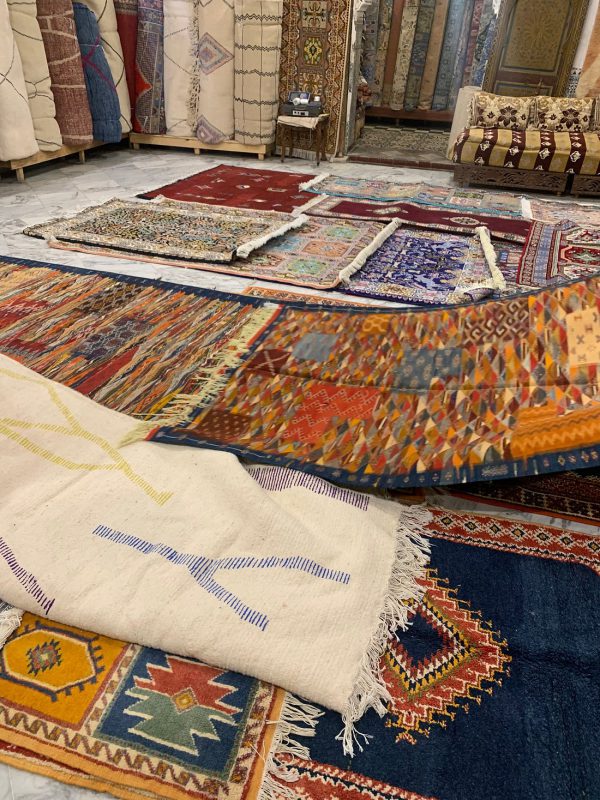
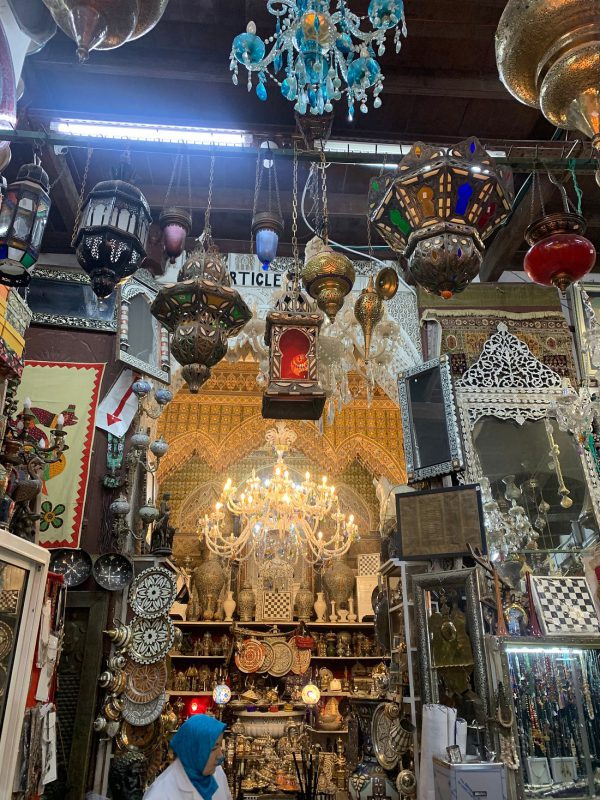
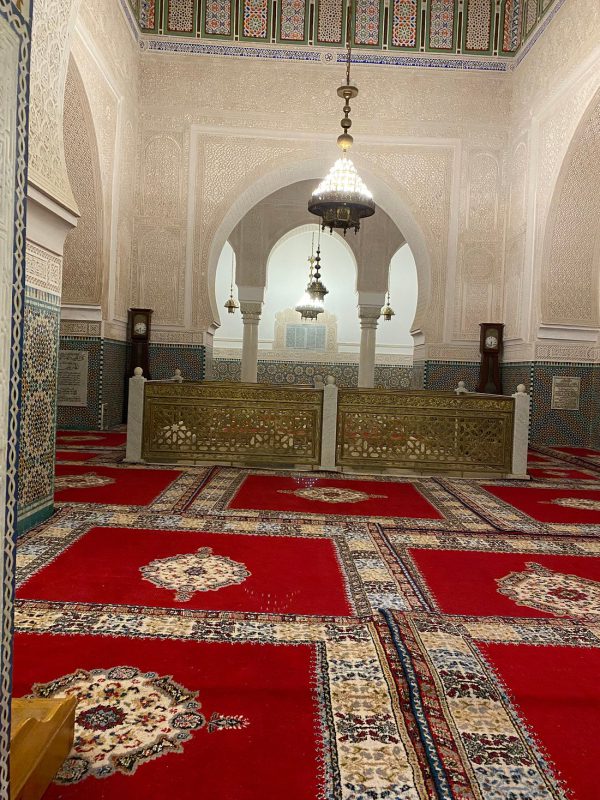
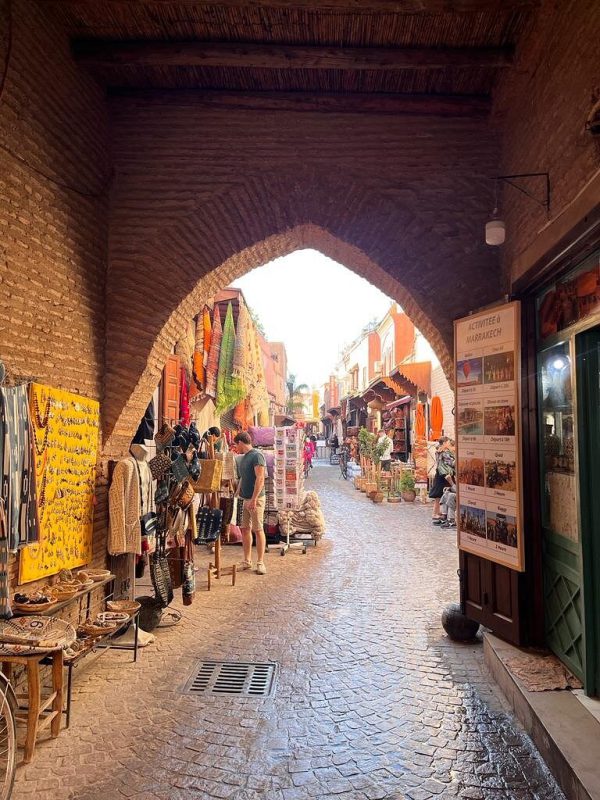
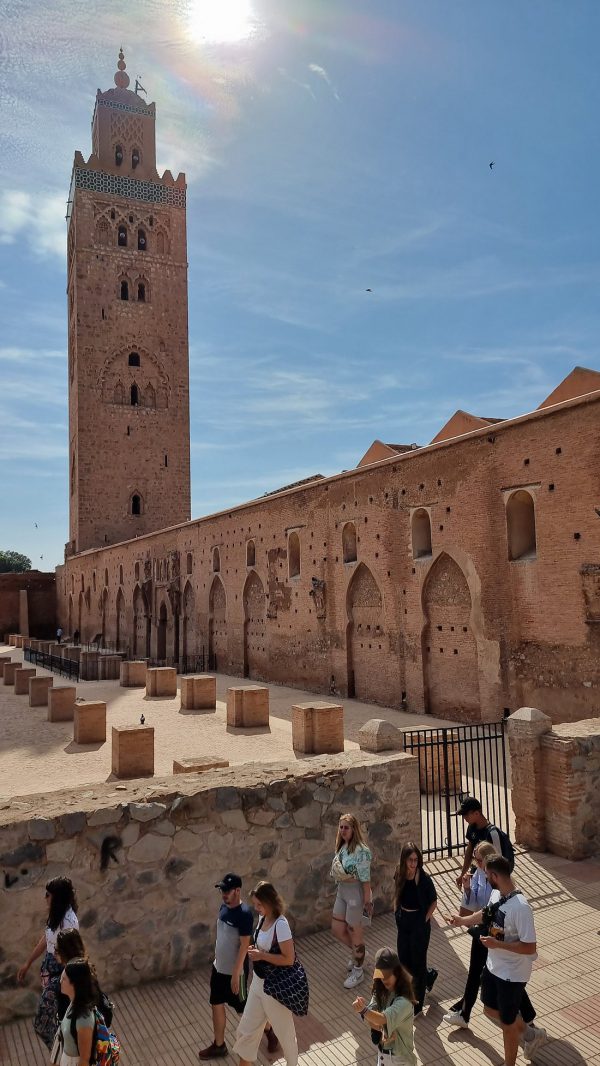
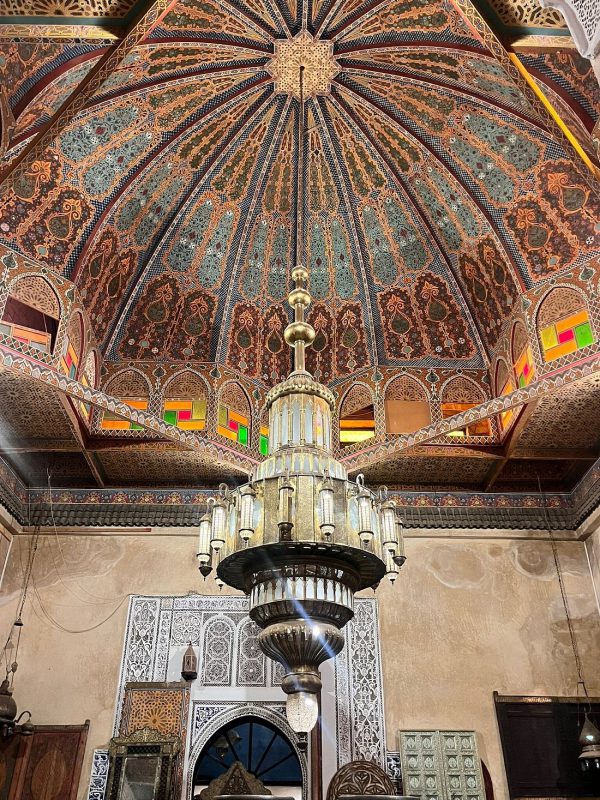
Comment (0)